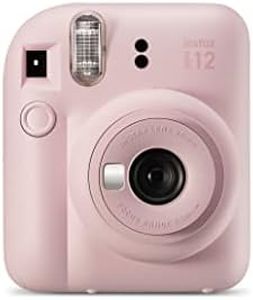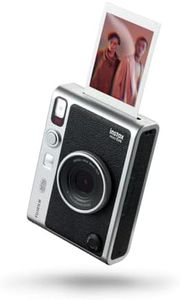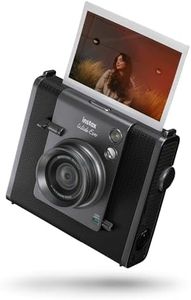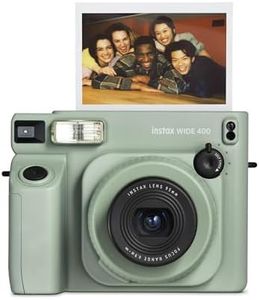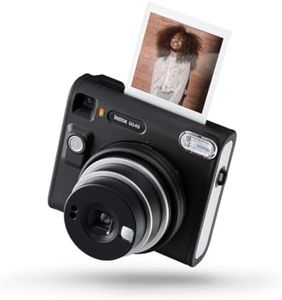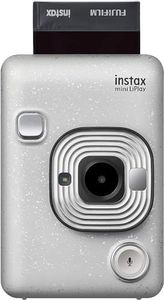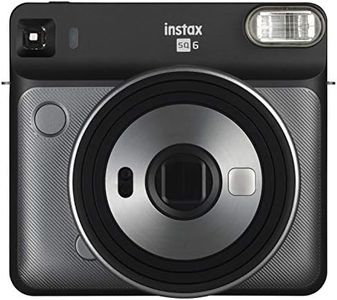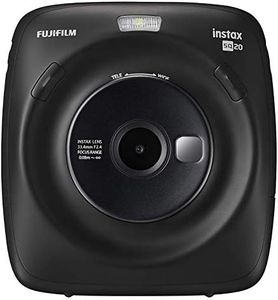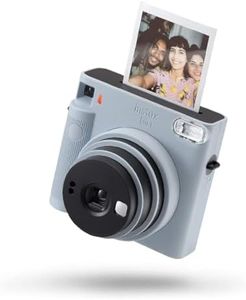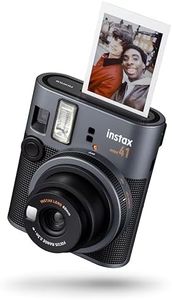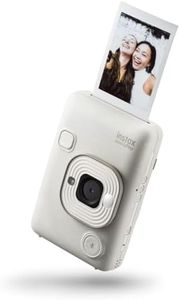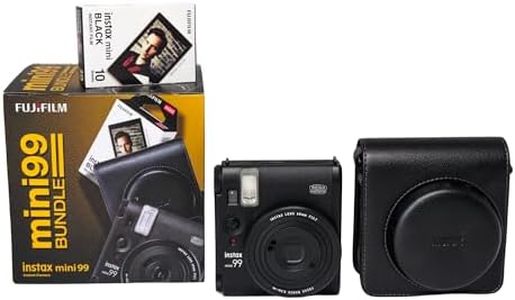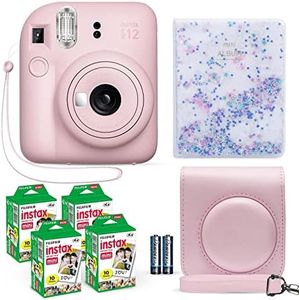We Use CookiesWe use cookies to enhance the security, performance,
functionality and for analytical and promotional activities. By continuing to browse this site you
are agreeing to our privacy policy
10 Best Instax Cameras
From leading brands and best sellers available on the web.Buying Guide for the Best Instax Cameras
Instax cameras are fun, instant film cameras that let you capture memories and print them out on the spot. Choosing the right Instax camera is all about understanding how you want to use it—whether it's for casual snapshots at parties, creative projects, or travel photography. The main things to keep in mind are how easy the camera is to use, what kind of film it uses, the size and style of the prints, and the extra features that add to the fun or convenience. Focusing on your needs and preferences will help you pick a camera that you’ll genuinely enjoy using.Film SizeFilm size is simply the physical dimensions of the photo prints your camera produces. The main types are Mini, Square, and Wide. Mini film creates small, wallet-sized photos that are easy to share and store, perfect for parties, scrapbooking, and quick keepsakes. Square format gives you a slightly larger, classic square image that feels more artistic and gives you more space for your composition. Wide film prints an even bigger photo, which is great if you want to capture group shots or landscapes with more detail. When choosing, think about how you want to use the photos: smaller for portability and sharing, larger if you like more visual impact.
Lens and FocusingThe lens and focusing system on an Instax camera affect how close or far away you can be from your subject, and how sharp your picture will be. Most Instax cameras have simple, fixed lenses, meaning you can't zoom in or out, but some offer close-up modes or attachable lenses for selfies and macro shots. If you enjoy taking selfies or detailed shots of small objects, look for models with a close-up lens or a selfie mode. If most of your photos are of groups or landscapes, the standard lens will do just fine.
Exposure ControlExposure control refers to how the camera handles lighting. Some Instax cameras adjust the brightness automatically, while others let you manually choose a setting based on your surroundings, such as indoors, cloudy, or sunny. Cameras with automatic exposure are easiest to use and give good results in most situations, while manual controls offer more creativity but require you to pay attention to the light. If you want simplicity, go with automatic exposure. Choose manual options if you like experimenting or have different kinds of lighting.
ViewfinderThe viewfinder is the little window you look through to frame your shot. Some viewfinders are large and bright, making it easier to compose your photo, while others are smaller or less accurate, which can lead to slightly off-center pictures. If you struggle with getting your subject in the frame, look for a camera with an improved or larger viewfinder. For casual and spontaneous snapshots, a basic viewfinder will work fine.
Built-in FlashAlmost all Instax cameras have a built-in flash that helps in low-light conditions. Some allow you to turn the flash on or off, while others fire automatically. If you often take pictures indoors or at night, a good automatic flash ensures clearer, brighter photos. If you want more control or dislike using flash, look for a model where you can manually adjust it.
Shooting Modes and Extra FeaturesShooting modes are special functions like selfie mode, double exposure, or landscape mode. Extra features can include a mirror for selfies, a timer, or connectivity to smartphones for more creative options. If you want to experiment and have fun, choose a camera with several shooting modes. If you prefer point-and-shoot simplicity, a basic model without extra features will meet your needs.
